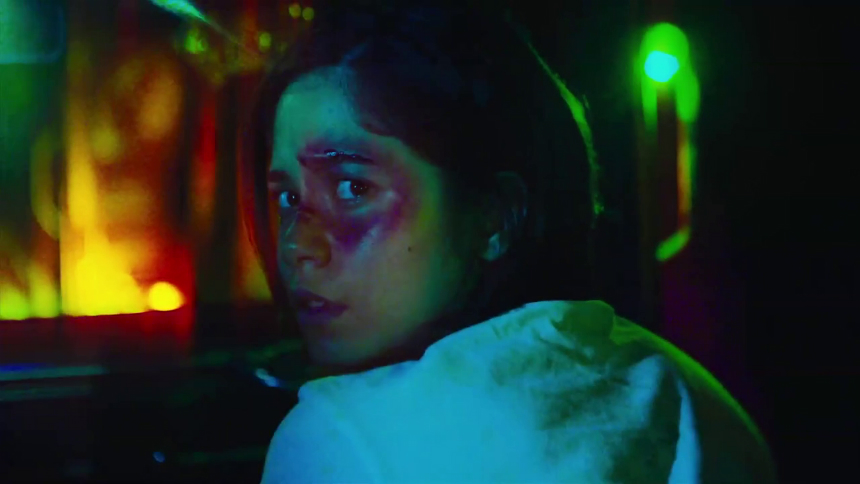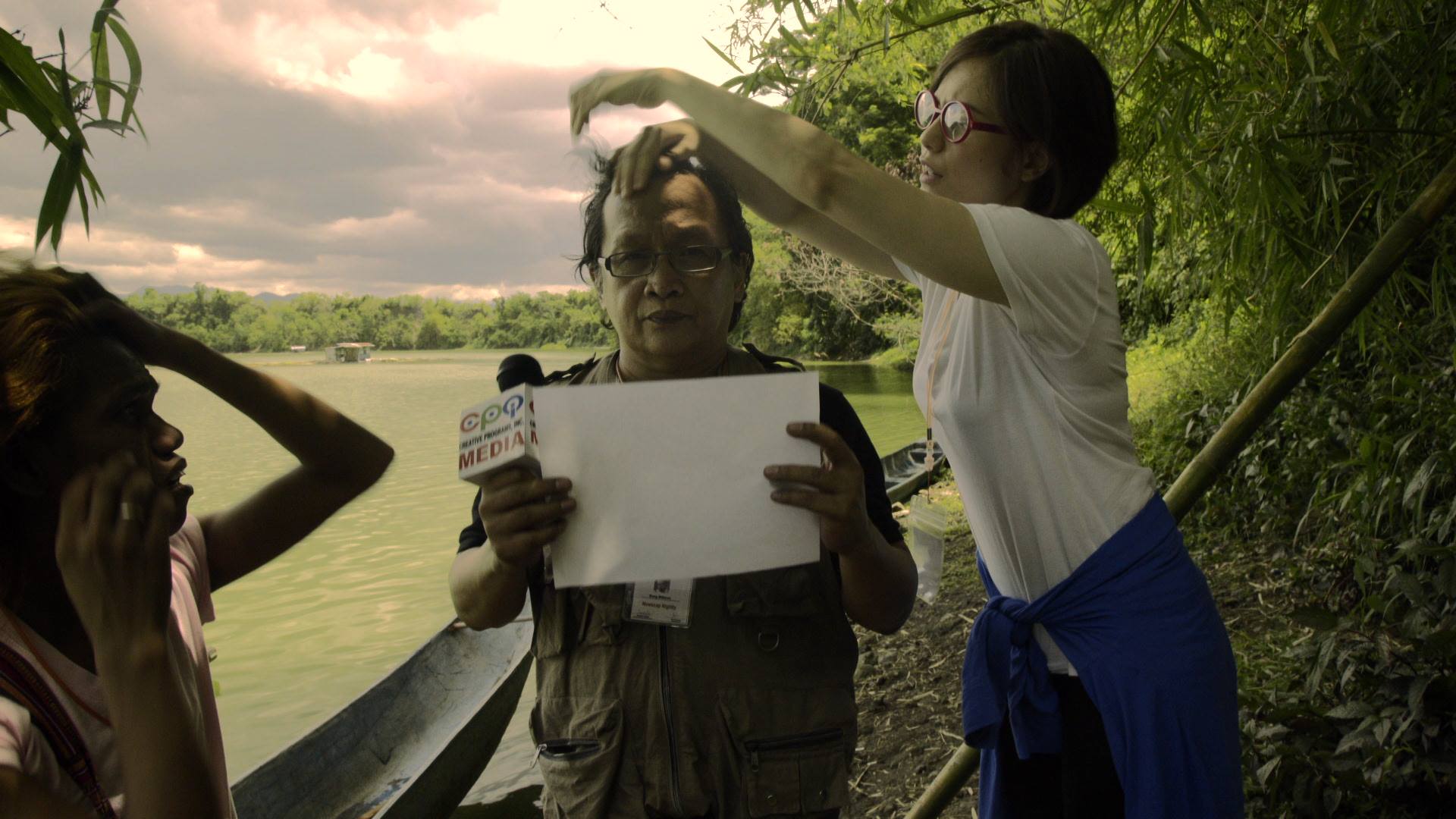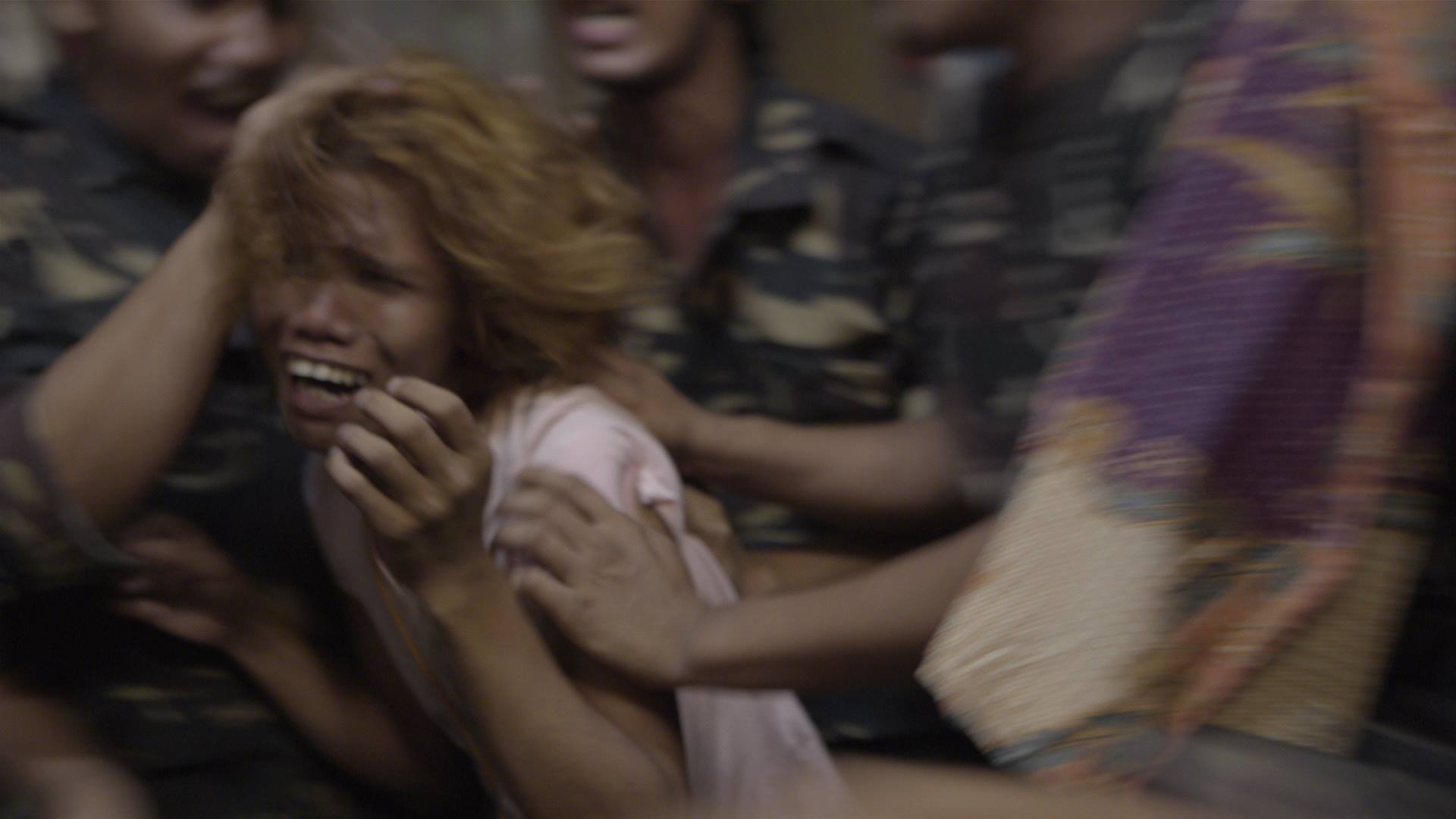Review: SALVAGE, a Genre Exercise in Subversion
Writer-director Sherad Anthony Sanchez bends the horror genre towards new artistic heights.

Warning: Full spoilers ahead.
“Te, kailangan ba kitang isama sa frame?” ["Sister, do I have to include you in the frame?"] Barbie (Barbie Capacio), the make-up artist, asks between screams, as she struggles to operate a camera while running for dear life.
Out of context, this sentence feels innocuous, dormant. But writer-director Sherad Anthony Sanchez uses these weaponizes these words -- his wild card -- timing it right, waiting for the build-up to reach its peak before releasing it to maximum efficacy.
The statement is layered in a way that serves as entertainment, delivering the best chuckles in the movie, but at the same time a clever commentary on an industry where lives can be considered secondary to a well-framed shot. It is this kind of provocative subversion that Sanchez doesn’t shy away from that makes Salvage so captivating.
From its off-kilter opening shot of a Ryan Agoncillo laundry detergent ad, to the scene immediately after -- that of a young man’s body being lifted out of a lake by the military and locals of a rural Cagayan De Oro village that's then asked to be redone for the camera -- Sanchez establishes early on the satirical, political subtext of his film.
For one, he uses cinema here as a tool to take a jab at the commodification of media by juxtaposing a commercial to that of what’s supposed to be an untarnished capturing of the news. By removing the idealism of good journalism from this scene, Sanchez creates a characterization for the main characters of the movie: they are industry veterans. Though young, they are already part of the system, used to the big city way of doing business.
This subtle but sound foundation of character helps create a significant contrast that will be a cornerstone for the film’s themes as these Manila-minded millennials (well, mostly millennials) come into contact with the mystical jungles of Mindanao.
To help depict these contrasting cultures of Manila and Mindanao, Salvage presents mythology as the go-to hypothesis for the recent slew of disappearances in rural Cagayan de Oro, including that of the body shown being hoisted from the lake earlier.
This dichotomy gives the audience a side they could better identify with. We, the viewers, inadvertently take on the crew’s perspective as alongside them we rationalize a solution: “This must be military abductions” “AFP berdugo!” [the Armed Forces are executioners!]. The film’s title* even plays a role in this sleight-of-hand as we are made comfortable with the idea that the real conflict of the film will come from the Terminator-esque soldiers on the hunt for this TV news crew.
*Note: In the Philippines, the word "salvage" denotes "extrajudicial or summary execution of both criminal and subversive elements." (from Pete Lacaba's "Carabeef Lengua" column - August 3, 1995)
What soon follows is approximately 45 minutes of a genre exercise on found footage thrillers. Sanchez goes full-on Blair Witch (or more appropriately the Spanish [REC]), employing standard tropes and genre conventions to create maximum tension and edge-of-your-seat action in a way that’s unapologetic.
Salvage does not condescend (“This is a thinking man’s way of doing horror,” “We won’t do this because we’re smarter!"). No, Salvage fully commits to being a run-of-the-mill thriller at the start of the movie. It leads you to a path you’re logically comfortable with. The film only employs arthouse techniques in its use of glitches, scratch sounds, and color gradings changing from time to time.
But just when you think you’ve seen it all, Salvage throws its audience into the deep end by suddenly crossing into surrealist territory towards the end the film; that’s where the magic of Salvage ACTUALLY begins.
The film dismantles preconceived notions and shatters comfort as it leads its audience unguided into full experimental mode. By creating an “us vs. them” dichotomy through the contrast set earlier within the film, Salvage gives the audience a greater shared experience with its main characters.
It was already established early on that we are on the same logical plane as the characters in this foreign terrain. We rationalized with them; our minds are synched with them on everything being about gun-carrying soldiers on the hunt. Thus, when this narrative logic gets thrown out the window, our experience of disorientation is amplified alongside them. We bond with the characters in the shared emotions of being lost, the shared realization of us truly being in a place we’ve never seen before.
Subverting the audience’s understanding of conventions is a recurrent theme in the film. Sanchez uses tropes we’ve become comfortable with to mess with our heads. One example would be that of the film’s sound design.
Many have been accustomed to the use of ominous music as a harbinger of standard scares or what not. In Salvage, expectations are toyed with as these percussions, these drumming noises, are used nonchalantly seemingly without any pay-off.
Local culture itself is used similarly in an effort to make the familiar unfamiliar. As the characters encounter the world of the aswangs, what we see is not a mirror of Filipino culture, but more like a refraction. They ride jeeps, they carry out processions and Santacruzans, also having a sort-of fiesta in their makeshift plaza.
It’s an unsettling treatment: elevating suspense, creating a dread that hovers, that permeates; we know, but we don’t understand. This dread and disorientation snowballs until the film’s conclusion where after all the rough and tumble, exhausted, one finds tranquility in being lost and alone.
This is Salvage’s greatest strength, not its story per se, but it’s ability to put you in the same emotional and experiential sphere as its characters. If 3D theaters make you feel a movie physically, then given what Salvage accomplishes, this might be the future of 6D or 8D, as it is a blending of perspectives, of experiences, past and present.
One last thing. Interestingly, in a film built on displacing its audience logically, creating contrast that disorients. There’s a metaphor that lies at the core of the film, one of astounding similarity. Historically, the idea of aswangs have been used to scare children: “they’ll take you away” “they’ll butcher you” “you’ll never be seen again.”
Given the current zeitgeist of impunity, the fittingness of these lines and the use of soldiers must be no coincidence.

Do you feel this content is inappropriate or infringes upon your rights? Click here to report it, or see our DMCA policy.








